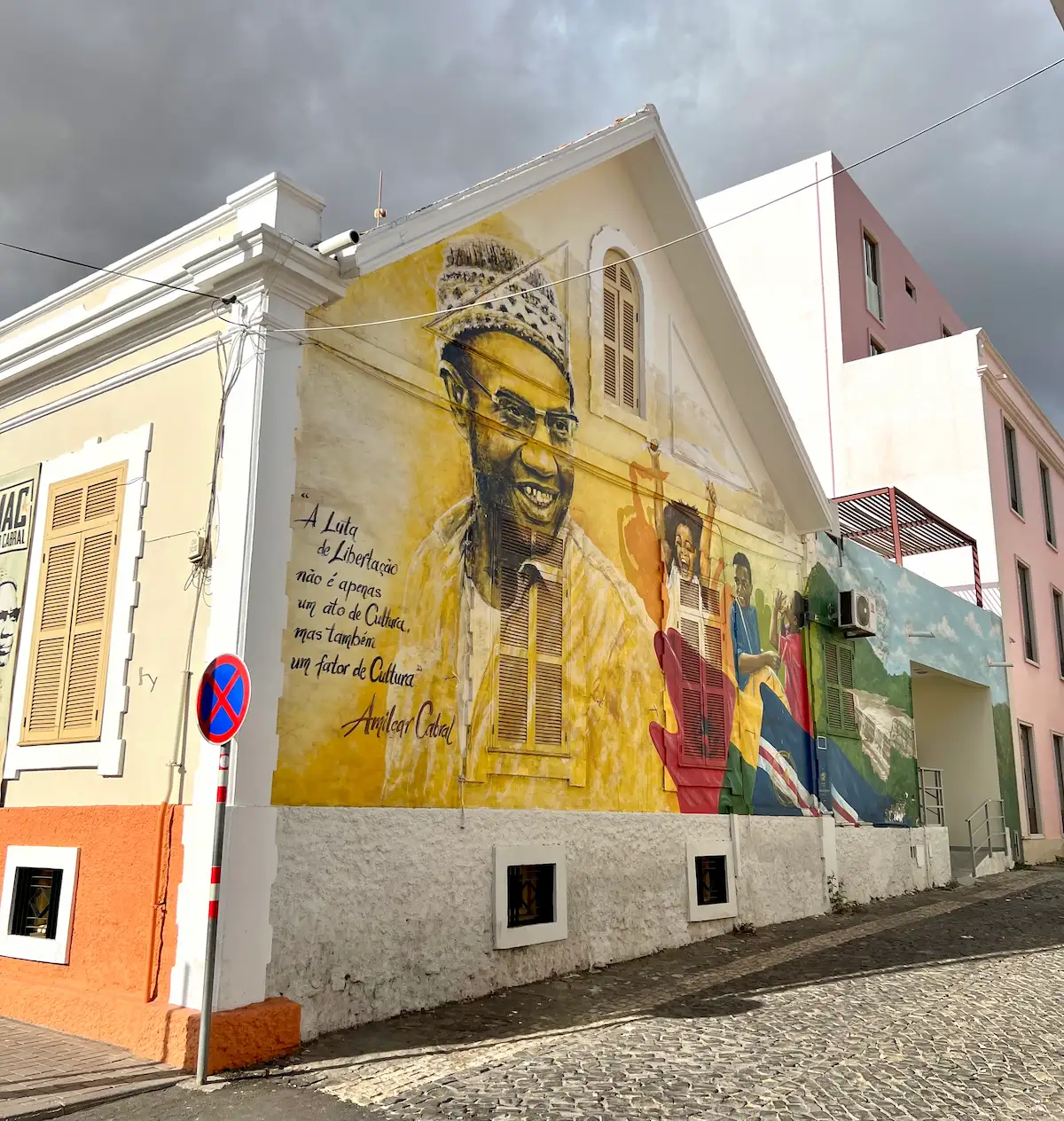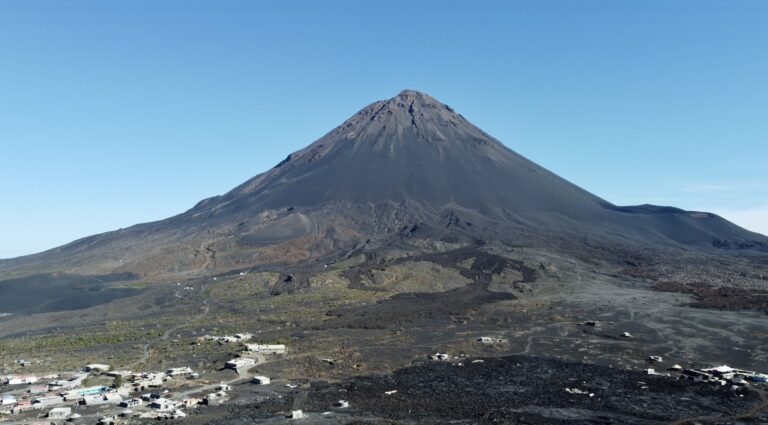Cape Verde Santiago Island: Guide to Praia and Cidade Velha
Plan your trip to Cape Verde Santiago Island: things to do in Praia, Cidade Velha, and Tarrafal. Culture, music, and the best beaches await you.
Contents
- Why Visit Santiago, Cape Verde (Not Only Sal or Boa Vista)
- How to Get to the Island of Santiago, Cape Verde
- Where to Stay in Praia, Cabo Verde
- What to Do in Praia, Cape Verde: One Day Plan
- Cidade Velha & the Fortaleza Real de São Filipe: Golden Hour
- Nature on Santiago Island, Cabo Verde: Serra da Malagueta & Pico da Antónia
- Tarrafal, Santiago: Coastal Day Trips
- Suggested 2 or 3 Day Itinerary for Santiago
- FAQs about Santiago, Cape Verde
- Conclusion
- Base yourself in Praia for culture & food; add Tarrafal for beaches.
- 2–3 days covers Praia, Cidade Velha (UNESCO) and one north-coast day trip.
- Getting around: shared taxis (aluguers) run between towns; rent a car only if you want flexibility.
- Connecting islands: book flights/ferries routes & seats are limited.
- Best time to visit Cape Verde Santiago Island: generally Nov–Jun (drier, breezier); summers are hotter/hazier.
Why Visit Santiago, Cape Verde (Not Only Sal or Boa Vista)
If “Cape Verde” makes you think of endless beach days, you’re probably picturing Sal or Boa Vista. Santiago is the island with the country’s heartbeat, a mix of history, live music and raw landscapes. The main cities are Praia for capital vibes, Cidade Velha for hilltop forts and golden sunsets, and inland nature parks like Serra da Malagueta and Pico da Antónia for hikers and viewpoint lovers.
I spent 2–3 days in Praia around New Years, and I found Santiago more cultural than the other resort islands (like Sal). You can find live music in bars and restaurants at night. It’s also where we planned the rest of our trip in Cape Verde, booked domestic flights, bought ferry tickets and exchange some local money. If you want to immerse yourself in Cape Verdean culture, Santiago is the perfect place to start.
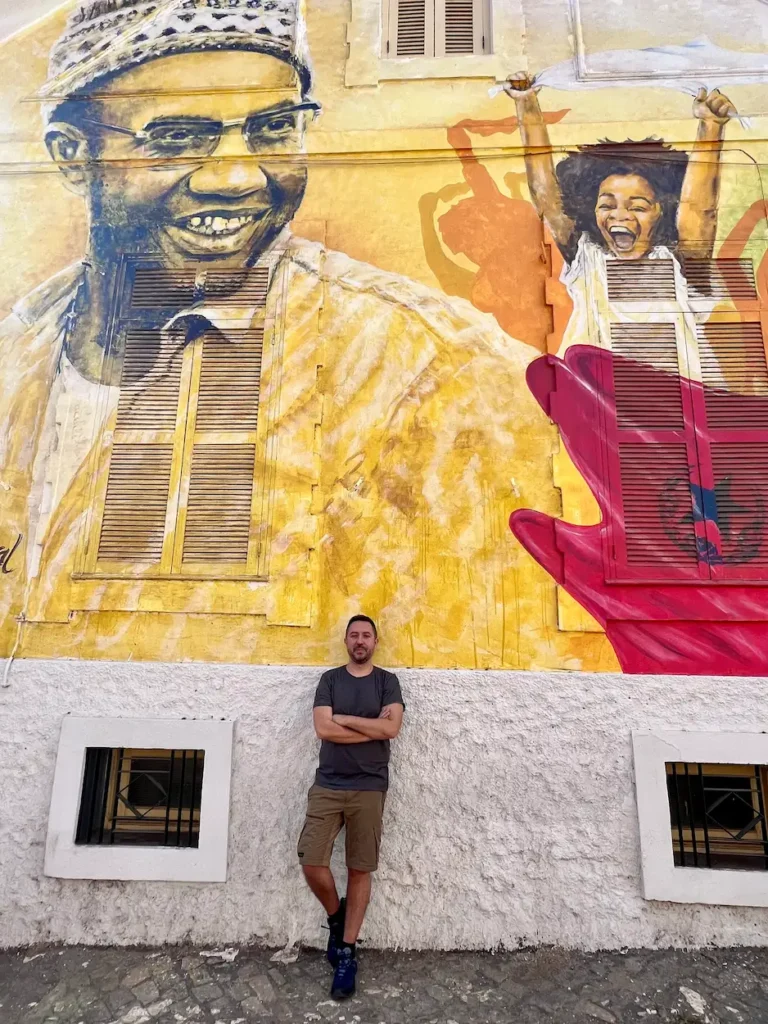
Who will love Santiago: city wanderers; history fans; travelers who like live and local music, markets, and day trips.
Good to know: You can find some beaches (Quebra Canela, Prainha, Gamboa, Tarrafal), but the star here is the blend of city, heritage and nature.
How to Get to the Island of Santiago, Cape Verde
International flights from Lisbon, Dakar and Casablanca
Cape Verde connects well via Lisbon (Portugal), Dakar (Senegal), and Casablanca (Morocco). I flew from Casablanca into Nelson Mandela International Airport (RAI) also called Praia International Airport, about 3 km from central Praia. If you’re combining islands, consider one or two buffer days to arrive to Praia (Santiago) and depart to Fogo, Sal or Boa Vista.
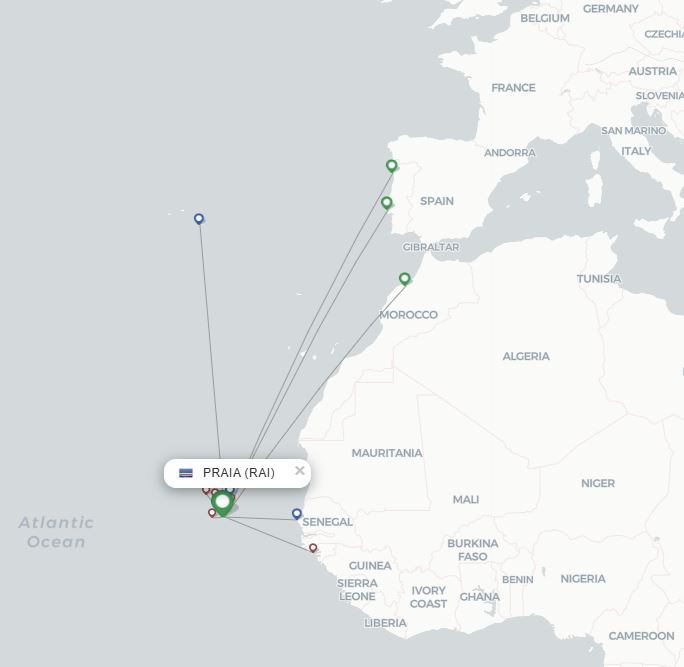
Domestic flights and local agencies in Praia
Domestic flights can save you hours that you will spend on ferries. On day one in Praia we handled logistics in person: we went to a local agency that sorted our round-trip flights to Fogo the same afternoon. However, It seems that you can book now online your domestic flights with Cabo Verde Airlines, keep in mind that seats on those flights are very limited.
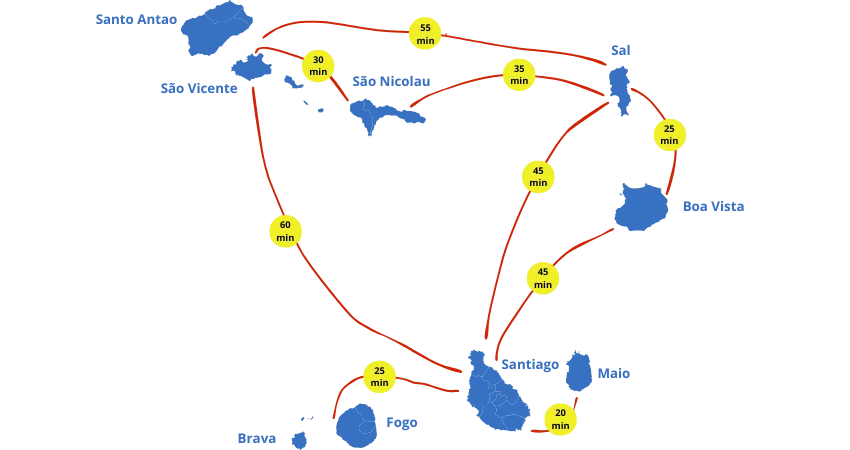
Ferries: when it makes sense
Ferries connect islands, though sea conditions and timetables vary. We bought ferry tickets for Boa Vista and Sal while in Praia. You just need to approach the Ticket office of CV Interilhas located in Praia’s city center. If you like slow travel and watching budget, ferries can be part of the adventure. For example the ferry between Santiago y BoaVista can take between 6 or 8 hours. Always double-check the schedule the day before you sail, as sometimes Ferries can be cancelled for several reasons.
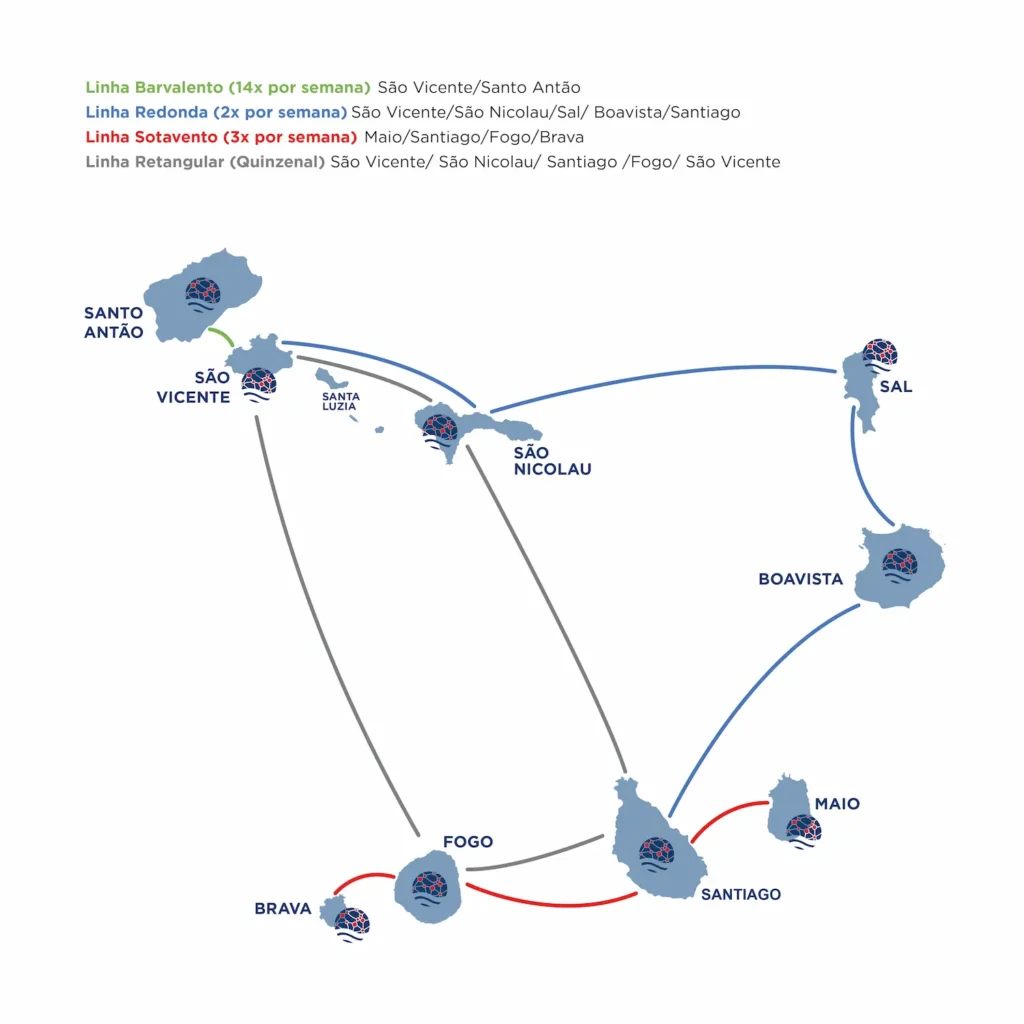
On-island transport
Taxis are plentiful in Praia and for nearby sights. For longer runs (for example, Tarrafal), agree on a price in advance or arrange a driver.
Where to Stay in Praia, Cabo Verde
Praia splits into the Plateau (Platô), the historic center, and the coastal strip with small coves and beaches. I stayed at two central spots: Hotel Playa Confort by the main square, and Hotel Boutique Playa María on one of the main pedestrian street. Both made it easy to walk core sights, cafés, and sort all our travel logistics. You can also find good restaurants in the area.
Plateau (center): walking distance to squares, markets, restaurants, banks, and agencies. Ideal if you’re handling flights/ferries and arranging any logistics for your Cape Verde trip.
Coastal strip (Prainha/Quebra Canela): closer to the water, sunset dinners, and a calmer feel. We watched New Year’s fireworks near Quebra Canela with stages with live music set up for the celebrations.
Pro Tip:
If you have only two nights, base in the Plateau (city centre) to be walking distance from the main places in Praia, then take a taxi to the beaches at sunset.
What to Do in Praia, Cape Verde: One Day Plan
City Centre, Squares & Sucupira Market
Start with a loop through the Plateau’s squares and streets. Sucupira Market for slow wandering: clothes, crafts, and everyday life. I like arriving mid-morning when stalls are lively but not packed.
Beaches around Praia, Santiago Island
Praia’s small beaches are perfect in late afternoon. Quebra Canela stood out for me: we had New Year’s dinner nearby and watched the fireworks from the beach. Prainha is a photogenic curve backed by embassies, while Gamboa has space for a walks and often a local vibe.
Live musicand nightlife
Cape Verde breathes morna, funaná, batuque, and more. In Praia we found singers and small bands in restaurants and bars: sometimes scheduled and sometimes spontaneous. If you’re set on hearing live music, ask your hotel for current spots and plan a later dinner. I found two i spots in the city centre: Quintal da Música and José da Rosa restaurant
Shortlist (Praia in a day): Plateau (city centre) walk, coffee/lunch, Sucupira market, beach time at Quebra Canela or Prainha, dinner with live music.
Praia in a day:
Plateau (city centre) walk, coffee/lunch, Sucupira market, beach time at Quebra Canela or Prainha, dinner with live music.
More Places to Visit in Praia
Praça Alexandre Albuquerque (main square, Plateau): 19th-century square lined with civic buildings; monuments to Alexandre Albuquerque (1926) and Serpa Pinto (1927). On its east side sits the Cathedral of Our Lady of Grace, built 1894–1902 in neoclassical style.
Presidential Palace (Palácio da Presidência, Rua Serpa Pinto): neoclassical, completed in 1894 as the governor’s residence; became the presidential palace after independence (1975).
Farol de Dona Maria Pia (Ponta Temerosa): octagonal lighthouse built in 1881, about 2 km south of central Praia, with sweeping harbor views; easy taxi hop.
Avenida Amílcar Cabral: the Plateau’s main artery, renamed for the independence leader; flanked by cafés and the Ildo Lobo Cultural Palace.
Cidade Velha & the Fortaleza Real de São Filipe: Golden Hour
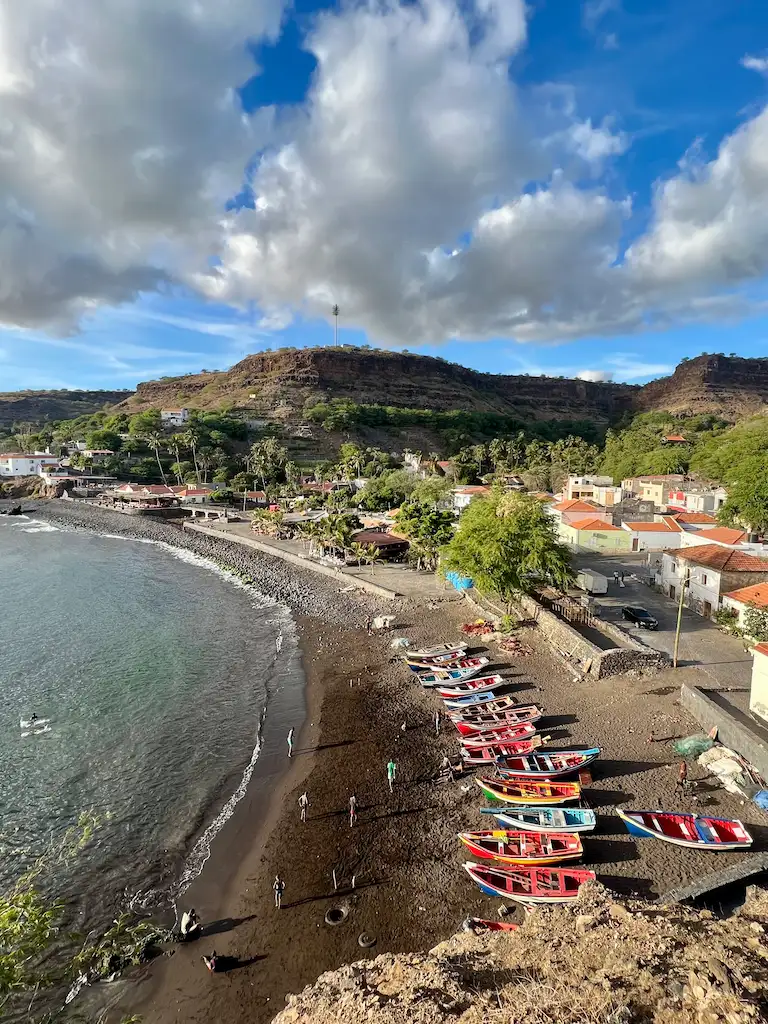
Just outside Praia you can finde one of the nicest towns in Cape Verde: Cidade Velha, a coastal village where time slows. Come for golden hour and you’ll see why it’s a must-see. We wandered through lookouts, then up to the São Filipe Fortress watching over the bay; later we walked by the small fishing pier and relaxed in terraces by the beach for a drink.
Cidade Velha gave me the best sunset of the trip. If you’re short on time, dedicate one long afternoon: taxi from Praia, explore viewpoints and the fortress, walk the town without rushing, then stay for sunset and dinner. Taxis back to Praia were easy to find.
Bring comfortable shoes, a light layer for the breeze, and don’t forget your camera.
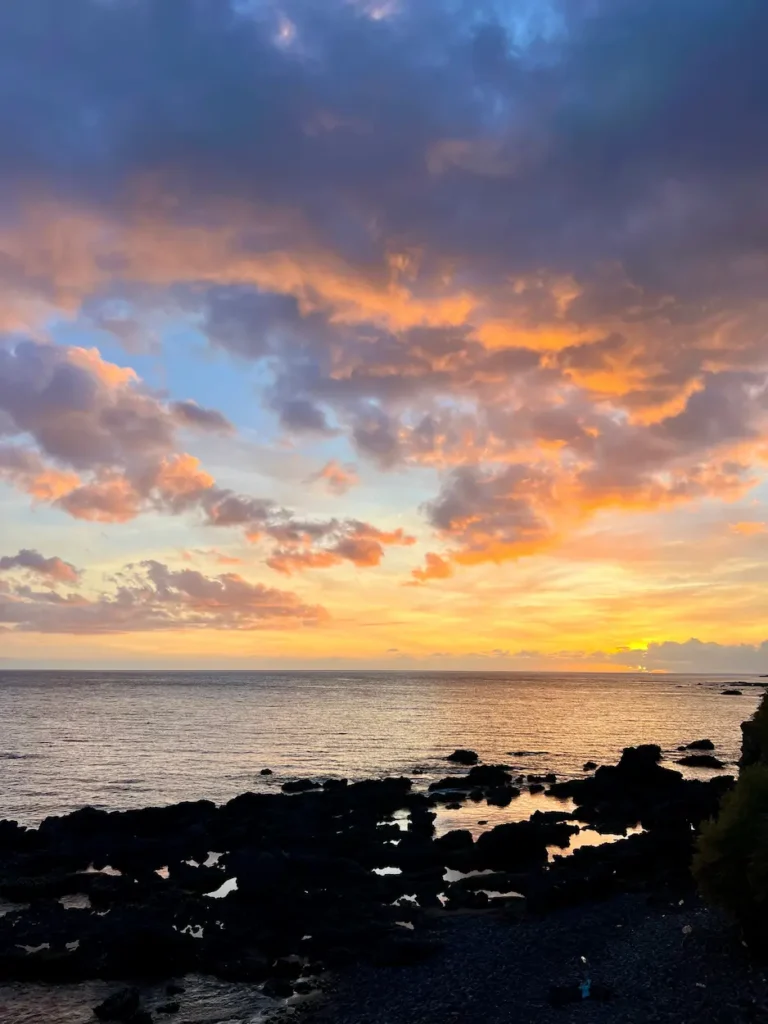
Cidade Velha: History and Why you Should Visit
Once called Ribeira Grande, Cidade Velha was the first European colonial outpost in the tropics and later became Cabo Verde’s first capital before it was moved to Praia in 1770. It’s now a UNESCO World Heritage Site (2009) thanks to its preserved street plan, fortress, churches and pillory square.
Key landmarks:
- Forte Real de São Filipe: hilltop royal fortress built 1587-1593 after raids (e.g., Drake in 1585); restored around 2000.
- Pelourinho (Pillory): a white marble pillar raised 1512-1520 in the main square; historically used to punish enslaved people, symbol of municipal power.
- Nossa Senhora do Rosário: church completed in 1495; includes a rare Manueline (early Portuguese Gothic) side chapel; often cited among the oldest colonial churches in sub-Saharan Africa.
- Rua Banana: the oldest Portuguese-built street in the tropics(sub-Saharan Africa); a short lane of traditional stone houses. It is perfect for photos between the square and the church.
2–3 hour loop (build on your sunset plan):
Main square (Pelourinho) → Rua Banana and Rosário church → taxi/foot up to São Filipe Fortress for coastal views → drop back to the square or the fishing pier for a terrace drink and golden-hour photos. (You already loved this timing—keep it!)
Nature on Santiago Island, Cabo Verde: Serra da Malagueta & Pico da Antónia
I didn’t make it this time (it is on my list for my next visit), but everyone recommends Serra da Malagueta for cooler air, walks, and big views. Even a short trail to a viewpoint should reward you with panoramas.
Pico da Antónia tempts hikers looking for high points and 360° scenery. If you’re not a hiker, ask locally about trail conditions and consider a guide or a driver drop-off/pick-up to save time.
Tip: Weather shifts quickly in the hills; start early, carry water, and pack sun protection.
Tarrafal, Santiago: Coastal Day Trips
North of Praia, Tarrafal is the classic day (or overnight) escape for beach time, palm-backed sand, and a relaxed fishing-town feel. Nearby Ribeira da Prata is known for black-sand and fewer people. We didn’t reach Tarrafal on this trip, but it’s exactly the balance Santiago offers: local life plus coastline, not just polished resorts. Consider one full day or even a night up there if you have time. Getting to Tarrafal beach; consider a taxi, shared transport, or a private driver. Roads are really scenic, photo stops are part of the fun.
Suggested 2 or 3 Day Itinerary for Santiago
Day 1: Praia
Morning: arrive and handle logistics (domestic flights, ferries) while shops and agencies are open.
Midday: Plateau visit: centre, square, streets, Sucupira Market.
Late afternoon: Quebra Canela or Prainha for a swim/sunset.
Evening: live music dinner in Praia.
Day 2: Cidade Velha & more Praia
Late morning/early afternoon: taxi to Cidade Velha. Explore São Filipe Fortress, viewpoints, and lanes.
Sunset: drink by the fishing pier, then dinner.
Night: taxi back to Praia; if you still have energy, find a bar with singers and local music.
Day 3 (option A): Tarrafal beach day
Early start north to Tarrafal; add Ribeira da Prata if you like. Return to Praia by evening or spend a nigth in Tarrafal.
Day 3 (option B): Serra da Malagueta hike
Morning walk to viewpoints and a short trail. Afternoon: chill beach time back in Gamboa or Quebra Canela.
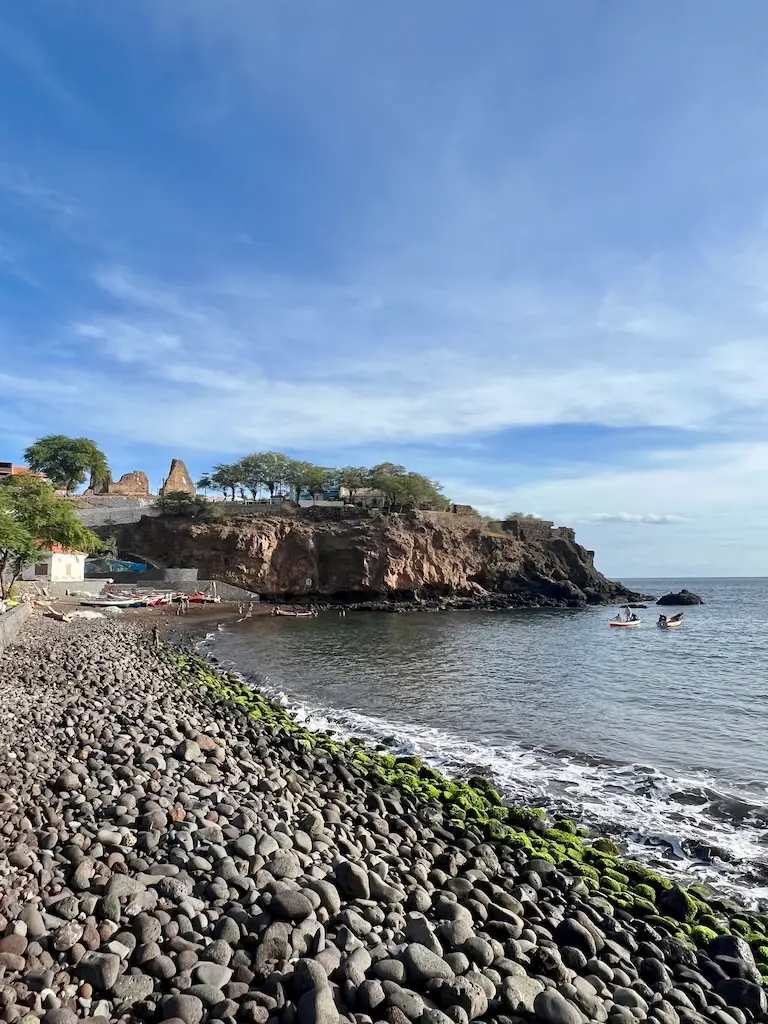
Tips for Travelling to Santiago island
Money Exchange and Payments:
We needed local cash on day one. Banks had the best rate but long queues. However, we changed smaller amounts at the hotel/airport: faster, slightly worse rate, but it kept us moving. If you plan ahead, hit the bank early on a weekday.
Cards vs cash: carry a mix. Small shops and taxis often prefer cash.
New Year in Praia, Cape verde
Around New Year, Praia sets up music stages and there’s a festive buzz along the coast. We had dinner near Quebra Canela and watched fireworks from the beach. Book restaurants ahead for 31 December and expect later dining hours.
Safety in Santiago, Cape Verde:
Stick to well-lit areas at night, use registered taxis, and keep valuables subtle.
FAQs about Santiago, Cape Verde
Yes, if you want culture, music, and day trips. You also have some nice beaches. Pair it with Sal or Boa Vista for longer trips and best beaches.
2 or 3 days gives you Praia, Cidade Velha, and either Tarrafal or a nature day. Add more if you’ll hike and spend time relaxing in Tarrafal Coast.
If you like walking and sorting logistics, stay on the city centre (Plateau). Hotel Playa Confort by the main square, and Hotel Boutique Playa María on one of the main pedestrian street are good affordable options. For sunsets and a calmer vibe, look at Prainha/Quebra Canela
Flights are faster but with limited seats and more expensive; ferries take longer to travel but are cheaper. I bought both ferry tickets (from Santiago to Boavista) and domestic flights (to Fogo).
Absolutely. We found singers and bands in restaurants and bars on multiple nights, ask your hotel for current hotspots.
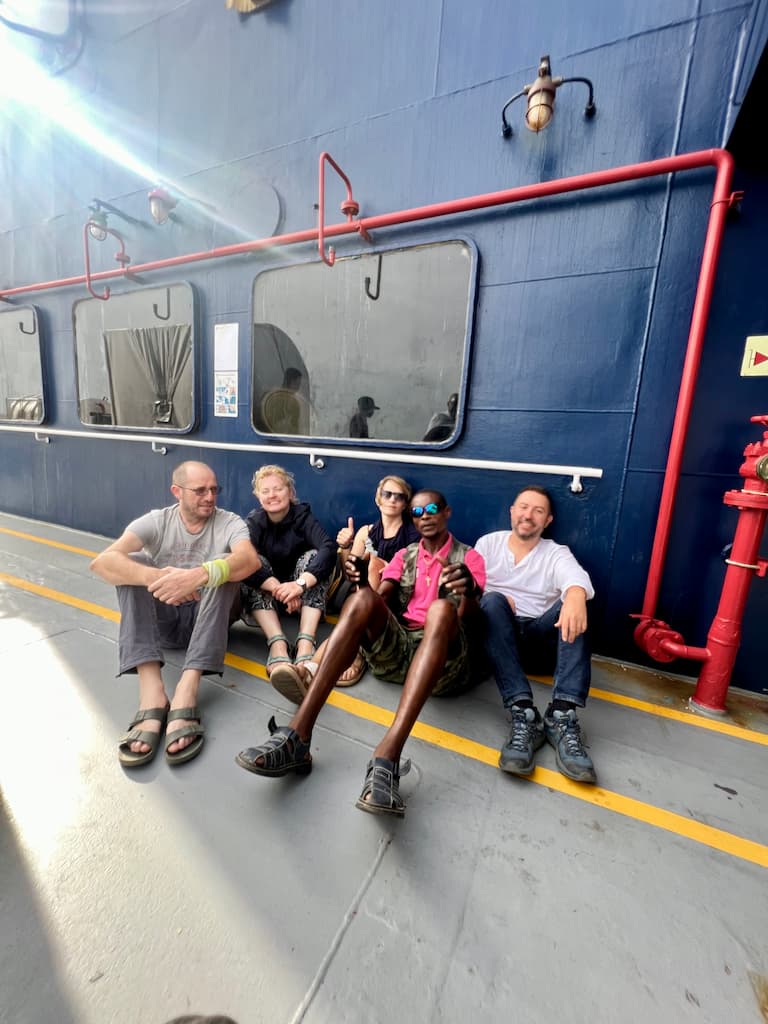
Conclusion
If you’re chasing the soul of Cape Verde, start with Santiago. Spend a day in Praia, take a golden-hour escape to Cidade Velha, and choose Tarrafal or a hike walk for day three. For me, New Year was perfect with live music, dinner by Quebra Canela, and fireworks on the water. Sort your logistics for your whole trip in Cape Verde from Praia, your sunsets in the evening, and let the island’s rhythm do the rest.
- Visit Cabo Verde (official tourism board): entry basics, island overviews.
- Praia (RAI) International Airport: airport info and services.
- CV Interilhas – routes & schedules: inter-island ferry timetables & booking.
- UNESCO: Cidade Velha, Historic Centre of Ribeira Grande: official site description.
- Government travel portal: official travel forms and notices.
This guide reflects personal experience; conditions can change quickly. Always verify locally (guides or official sources) before travel.

